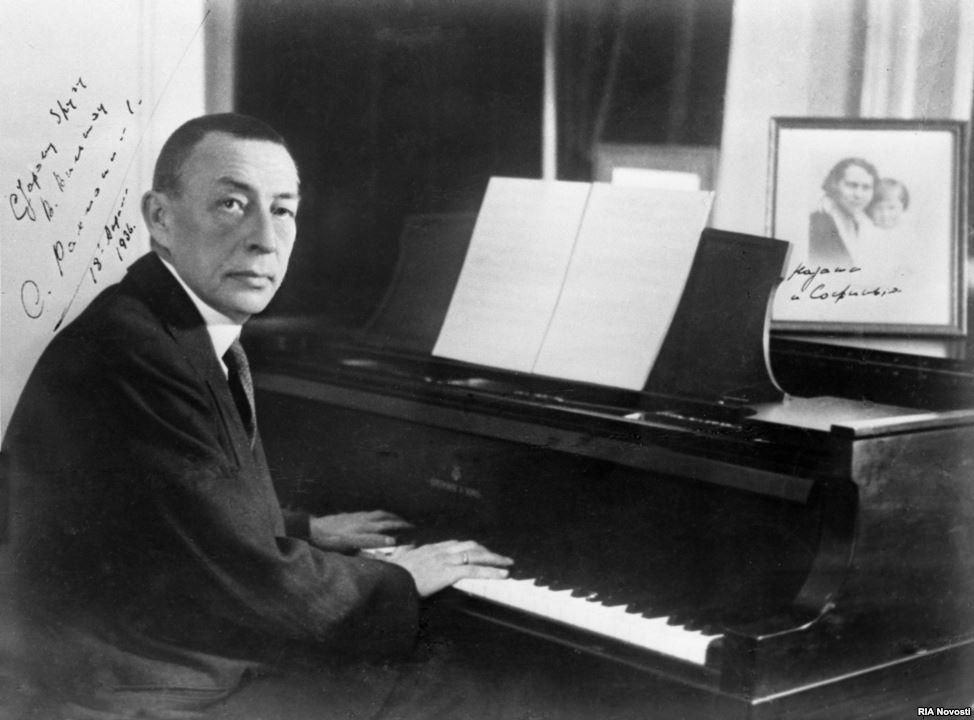Processing my exchange with Vladimir Feltsman, I find myself distracted by something I have long more or less ignored: the art of the piano as manifest by the young artists who today dominate the scene — what Feltsman calls “a new artform.” I am sure my limited purview is unfair. But it’s a sea-change; no previous piano pantheon has so recklessly privileged youth.
So I’ve been binging on the recordings of Rachmaninoff. Re-encountering his 1924 version of Chopin’s Scherzo in C-sharp minor (i.e., a performance recorded when he was 51 and in the throes of a complex exile that compelled him to reinvent himself as a touring concert artist), I am reminded what ripe keyboard artistry sounds like. Instantly, I’m arrested by the second theme: a chorale. Because this pianist has subtly trained his ten fingers as independent operators, he can shade and differentiate the voices at will. This may sound like an esoteric feat, but use your ears from 1:15 to 2:19: the chorale lives and breathes.
As some readers of this blog may dimly remember, I long ago wrote a book titled Conversations with Arrau. I will never forget Claudio Arrau’s sublime performances of Beethoven’s Waldstein Sonata – not least for the full textures of the first movement’s chordal second theme. “He voices everything,” a Juilliard piano pedagogue once complained to me. Precisely.
Arrau left a singular 1953 recording of that Chopin C-sharp minor Scherzo. Like Rachmaninoff’s it is not an interpretation for everyone. Rather, it is distinctive in approach, distinctive in sound. It is “quality art.”
I just revisited it on the web – right here. In Conversations with Arrau, I wrote about the passage at 26:55:
“Arrau’s Chopin lacked both the heartiness of [Arthur] Rubinstein and the complex display of [Vladimir] Horowitz. Without inquisitive listening, not only was the scope of Arrau’s interpretations not likely to be received as a virtue, but the detailing—so different from Horowitz’s – was likely to pass unnoticed.
“A case in point is the piu lento section of the C-sharp minor Scherzo, which Arrau charges with mystery. Rather than dramatizing the modulation to the minor with pathetic inflections and smeared pedaling showing the dejection of the filigree, the meaning of the passage is uncovered at a depth. The muted chords are weighted to retain their majesty. The filigree is softened without diluting its poise. The smorzando is underlined by an imperturbably steady ritardando. The effect is of tragedy dissolving, just before the healing surge of the coda, to a searching calm rarely found in Chopin.”
Probably these observations sound terribly recondite (this blog posting feels like an act of recidivism). There used to be an audience for written observations of this kind – and for the commensurate artistry of the deservedly famous pianists so described.
Are there great young pianists? In North America, the irrefutable examples are Glenn Gould and Van Cliburn. If these were instances of the ardor of youth trumping the wisdom of maturity, both satisfied the highest criteria for “quality art.” Gould’s Goldberg Variations recording of 1955, when he was 23, is the singular emanation of a distinctive artistic personality. The same was true of Cliburn’s Rachmaninoff in Moscow, in 1958, when he was 24. And each pianist already commanded a sonic imprint all his own. Notwithstanding the pertinence of the Cold War, Gould and Cliburn were famous for self-sufficient musical reasons, reasons intrinsic to artistry.


I think Rubinstein’s early recordings (on EMI) are underrated in relation to his later recordings (on RCA). I think in many ways the younger Rubinstein was a better, more compelling pianist — more spontaneous, more engaged — than his older self (which is not in any way to denigrate ANY phase of the work of this supremely wonderful musician). So I think Rubinstein was a great young pianist.
My favorite recording of Chopin’s Scherzo, Op 39 is by Martha Argerich, who when she recorded it at (I believe) age 16 had it all: technique, tone, and taste. I don’t wish to dismiss work by older pianists, though: The Nonesuch recordings Mieczyslaw Horszowski made in his nineties are, by virtue of their musical wisdom, a source of endless inspiration.